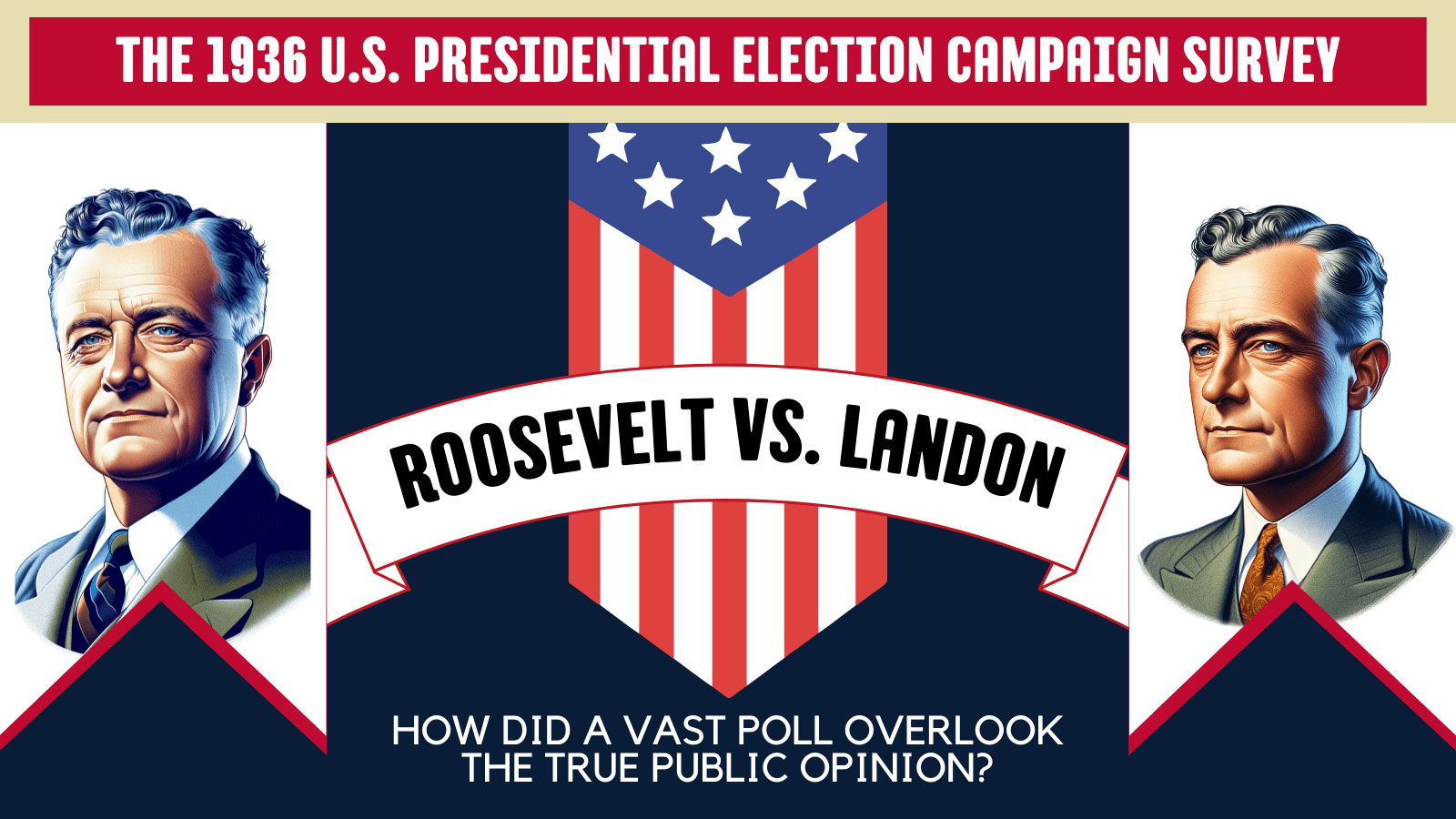
The 1936 Roosevelt-Landon Campaign Survey - A Landmark Lesson in Market Research
Background:
In 1936, the United States Presidential Election was a stage for one of the most dramatic miscalculations in the history of opinion polling. The contest was between the incumbent President Franklin D. Roosevelt (Democrat) and Governor Alf Landon of Kansas (Republican). Amidst the Great Depression, the election was a referendum on the New Deal policies implemented by Roosevelt.
The Survey:
The Literary Digest, a popular and well-respected magazine of the time, embarked on a mission to predict the election's outcome. It had successfully predicted the winner of the previous five presidential elections using large-scale mail-in polls. The Digest mailed out more than 10 million ballots, of which 2.4 million were returned. Based on this data, their prediction was a landslide victory for Landon, with 57% of the popular vote.
The Outcome:
Contrary to the Digest’s prediction, Roosevelt won the election in a landslide, receiving over 60% of the popular vote and 98.5% of the electoral vote. This result was not only a political upset but a stunning blow to the credibility of The Literary Digest.
Analysis:
The Digest's survey methodology was flawed due to non-representative sampling. Their sample was drawn from telephone directories and lists of automobile owners, who in the 1930s were more likely to be affluent Americans, who tended to be Republican. This bias overlooked a significant portion of the American population, particularly the lower-income and rural voters who strongly favored Roosevelt.
Moreover, the survey’s large sample size gave a false sense of accuracy. The Digest mistakenly believed that a larger sample would inherently yield more accurate results, disregarding the importance of a representative sample.
The Aftermath and Lessons Learned:
The 1936 election survey was a turning point in market research. It highlighted the critical importance of representative sampling over sheer sample size. The event also paved the way for the rise of George Gallup's American Institute of Public Opinion, which correctly predicted Roosevelt's victory using a much smaller, but scientifically selected, sample size.
Conclusion:
The 1936 Roosevelt-Landon campaign survey fiasco serves as a foundational case study in market research, emphasizing that data quality and representativeness are more crucial than quantity. It underscores the principle that understanding and accurately representing the target population is vital for insightful and reliable market research outcomes.
Syno International offers access to diverse audiences and has processes in place to prevent market research errors like these, using advanced tools for balanced data collection and insightful reporting.
Interested in learning more about how we can elevate your market research strategies and prevent historical missteps? Let’s connect and explore the possibilities together. Reach out to us at info@synoint.com.